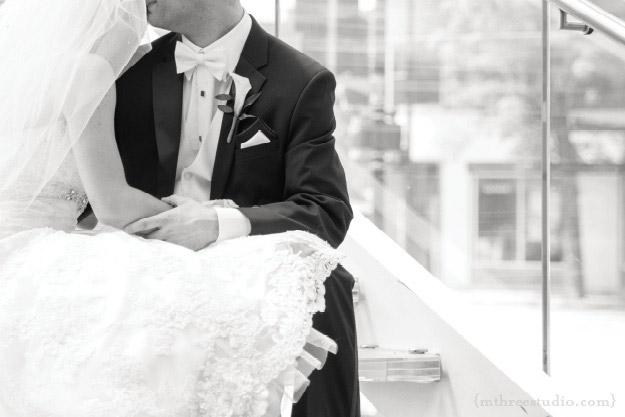The nature of planning a wedding means that in one day you are coordinating a series of events for what is usually a large group of people. Not only do you have to consider guests and make sure they know the general timeline of the day, but both ceremony and reception vendors will all need to be on the same schedule. The good news is that weddings typically have a similar flow, and drafting an outline of events can be helpful for all involved.

In order to give an example of a wedding day timeline, the sample below will assume that the ceremony starts at 4:30PM followed by a reception at 6:30PM. There are a lot of adjustments that can be made based on the timing of events and what the bride and groom want (and don’t want) to be included in their wedding day. But in general, an outline of ceremony and reception events can follow this guideline:
| 9:00AM | Florist to deliver flowers, and reception setup commences |
| 10:00AM | Bride and bridesmaids begin hair and makeup |
| 12:00PM | Bride and Groom meet for the day and spend time together |
| 12:30PM | Photographer beings pictures |
| 3:30PM | End formal photos and begin transport to ceremony site |
| 4:00PM | Guests begin arriving at ceremony |
| 4:30PM | Ceremony begins |
| 5:00PM | Ceremony ends |
| 5:30PM | Guests make their way to reception site for cocktails |
| 6:30PM | Guests enter formal reception venue |
| 6:40PM | Band announces Bride & Groom |
| 6:40PM | First Dance & cake cutting |
| 6:45PM | First course of dinner is served |
| 7:00PM | Toasts |
| 8:00PM | Dinner concludes, cake is served |
| 8:15PM | Mother/Son dance and Father/Daughter dance |
| 8:30PM | Open dance floor! |
| 9:30PM | Bouquet toss |
| 10:30PM | Reception ends |
The above example can be adjusted in increments based on the start time of the ceremony and reception, and of course the entire day can be customized to the couple in a variety of ways. This schedule allots for three hours of photographs before the ceremony, which would mean that the bride and groom not only see each other, but their entire family as well. Some couples opt to have the ceremony a little earlier in the day, extending the cocktail hour, and taking formal photos with their family after the ceremony has concluded.

Ceremony lengths can vary based on personal and religious preferences, but basic wedding ceremonies last approximately twenty minutes. Some couples might also choose to have a receiving line as a way to greet each guest after the ceremony, in which case the cocktail hour could be eliminated or condensed if pictures were taken earlier in the day.

Additionally, the sample timeline assumes that after the couple has their first dance, they will also immediately cut the cake (before dinner). The logic behind this is that while all of the guests enjoy their meals, the caterers will have time to cut the wedding cake so it can be served quickly after the meal has concluded. Another option would be to cut the cake after the first course of dinner is served, around the same time as toasts are given.
No matter how the bride and groom choose to customize their nuptials, it is always helpful to have a detailed outline of the day to ensure things run as smoothly as possible!
Bonus: Learn how to become a wedding planner. Enroll in the New York Institute of Art and Design's Wedding Planning Course today!







